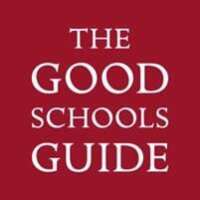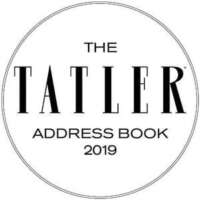Expert Insights
The 11+, 13+, and your child’s happiness
Published 6th May 2020
With school entrance exams still reported to be going ahead in the autumn, now is a good moment to reflect on the 11+ and 13+ exams. We spoke with our fantastic schools expert Sally Hobbs to go over some of the differences between the two systems, and what they mean for your child.
For most parents and most children, there won’t be any choice at all between the 11+ and 13+. It’ll be one or the other, based on which schools your child is targeting. Whilst venerable institutions such as Winchester, Eton or Harrow still use the Common Entrance exam at 13+, most schools use the 11+. Furthermore, many prep schools don’t take students beyond age 11, so, if they’re attending one of these, your child will have little choice but to move on at the 11+ stage. So, although it’s not as simple as a direct contest, it is still worth pausing to consider some of the implications of both these systems existing side by side, and what it means for children.
Indeed, with an increasing and important emphasis given to children’s mental health and overall well-being (which the current lockdown should only serve to enhance), there is a valid question as to whether the concurrence of the two entry points is best for children.
The key differences
There is a quite substantial difference between the demands of the 11+ and of the 13+. While the 11+ tests Maths, English and Reasoning, the 13+ extends to encompass the broader curriculum, including the Sciences as a compulsory paper, while giving students choice as to the other exams they take (they might sit papers in History, Ancient Greek or Spanish, for example).
Both are intense and tiring for children, requiring multiple exams and putting them under a good deal of pressure. With the range of subjects and the need to prepare for them all thoroughly, however, the 13+ places special demands. As a result, the 13+ is increasingly falling prey to discussions surrounding fairness and equality; it is far easier to prepare for these exams from a position of strength than it is to break into this system from a state sector where everything is geared around the 11+.
Bridging the gap and some uncertainties
Accordingly, schools which admit at 13+ are becoming increasingly flexible, either letting in more students at the 11+ stage or providing other options. Some are creating associations with schools which can operate as feeder schools and teach children until 13. Eagle House, for example, fulfills this role for Wellington College. Others are opening bursaries for students to spend two years at another school before moving over to them. Outside of the schools themselves, the Royal National Children’s Springboard Foundation gives opportunities for children from non-traditional backgrounds to access 13+ schools.
These measures, however, seem to be swimming against the current. School entrance exams appear to be in something of a transitional moment, one that might be encouraged or sent in new directions as a result of the uncertainties of the current Covid-19 crisis.
One possibility is that schools which have traditionally used the 13+ will shift towards the 11+ as a financial decision. This might be the result of a decline in the number of foreign students applying for those schools in the next few years. Another is that, with the focus rightly being put more and more onto the wellbeing of children, it could be questioned whether both of these systems are necessary. With schools running the 13+ very much in the minority, practical considerations (leaving aside any arguments over which system is ‘better’) will maybe encourage a move to the 11+.
What’s best for children?
Within all of this, the most vital question is: what is best for children? What will give them the best quality of education?
There are a few things in favour of a long-term shift towards streamlining school entrance into the 11+. Not least of these is that it would provide a more level playing field for students from different backgrounds. Whilst there is some debate that boys perform better in the 13+ due to the extra years of development, and accepting that no two children are the same, it seems clear that dropping the 13+ for the 11+ would make access easier to certain schools for many students.
It also seems fair to suggest that having the question of a child’s school settled earlier could make a big difference to the quality of their education and also their personal development. An article in the Times recently highlighted the work of Reach Academy in Feltham: a ‘cradle to career’ school that teaches students all the way from nursery to sixth form. Whilst the UK has tended to emphasise children moving between schools frequently, and there may be benefits to that, there will be other children who benefit from the stability and longevity of not moving schools beyond a certain point.
Finally, there is the curriculum. The 13+ exam keeps students focused on school entrance at a much later date, meaning the curriculum of those relevant schools is geared around that. This might both keep certain subjects out of the equation, whilst also not allowing for discovery and experimentation at the edges. With students studying for GCSE exams from 14 (and A levels following immediately after), it is important to inculcate a love of learning without the millstone of exams when the opportunity is there.
Tentative conclusions and more questions
A balanced discussion about phasing out the 13+ in favour of the 11+ is perhaps to be welcomed, but there are still many unknowns, not least surrounding the current situation with Covid-19. The important thing is that we take the opportunity to reflect on what is best for children. As parents, teachers, tutors and consultants, we need to acknowledge how resilient children are, whilst also giving them the space to grow and love learning on their own terms. That goal could be served with either the 11+ or 13+, but perhaps their coexistence adds extra uncertainty and pressure to an already stressful process.











